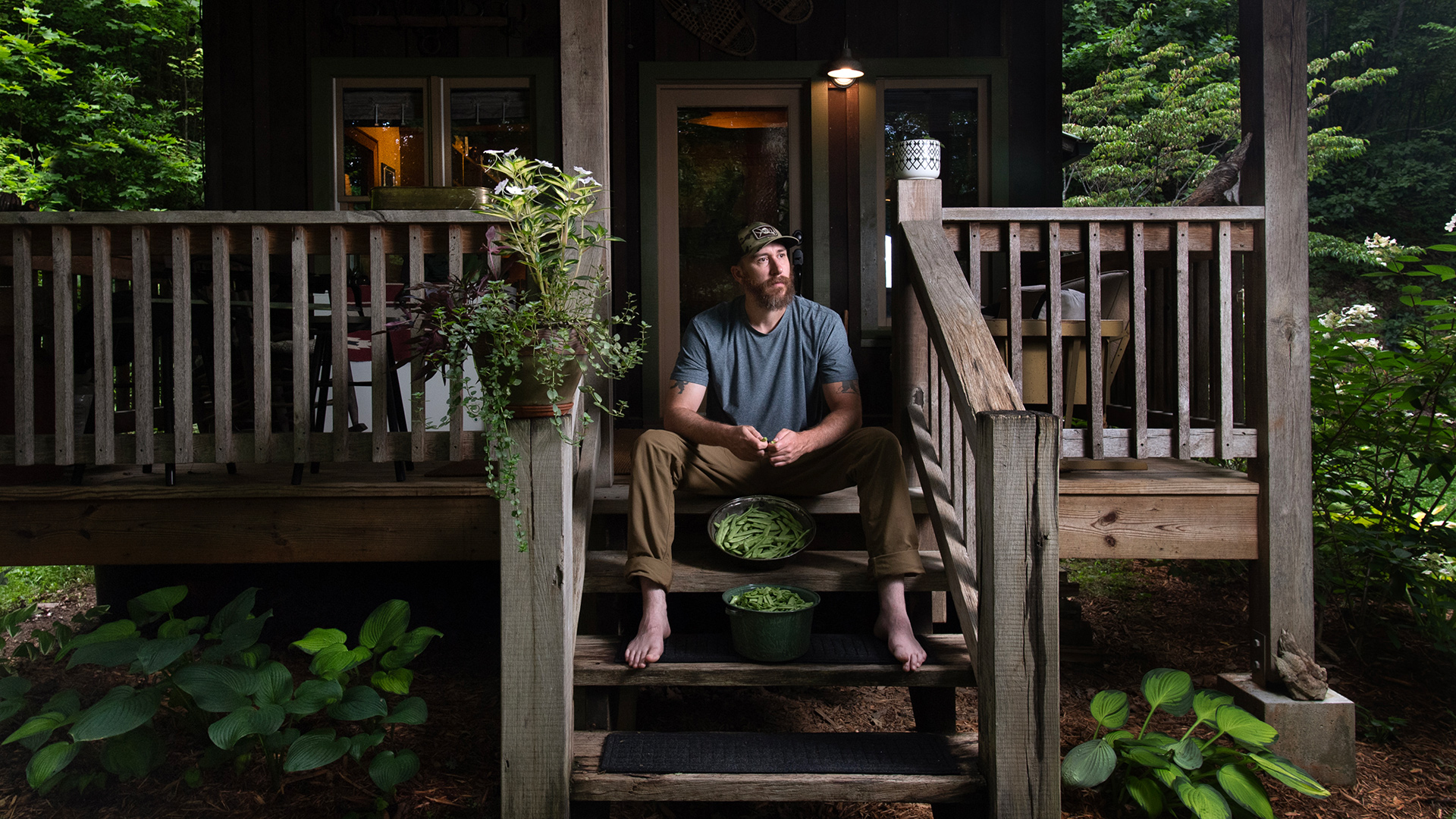
Made You Look
The award-winning North Carolina writer David Joy’s new novel forces White characters into difficult conversations about race—and White readers to look harder at themselves.
If you see David Joy in his natural habitat, as viewers of PBS’s welcome new Southern Storytellers series do, you might assume he is a certain kind of man, a kind he most decidedly is not.
The show follows David on a dove-hunting trip in Jackson County, North Carolina, where he lives. His hat, his shirt, and the bag he carries over his shoulder is camouflage. Even the stock of the shotgun in his right hand is camouflage. People from away might see that image on their local PBS station and react, knees jerking, by assuming that he is unenlightened, a “redneck” perhaps, maybe even a racist.
But the clothes don't make the man, and they never have. If those same people read Those We Thought We Knew, David’s fifth novel, which will hit the stores on Tuesday, they will know, by the time they finish Page 6, that he is as far from any of those stereotypes as any White Southerner could possibly be.
Since 2015’s Where All Light Tends to Go, David’s novels have looked unflinchingly and lovingly at Appalachian life and mountain culture. His books have become critical preservers of places and people that are fast disappearing thanks to rampant, unchecked real estate development. As he says in Episode 1 of Southern Storytellers, “I write about places and they disappear before the book comes out.”
And he writes about those places with a facility that could come only from someone who knows the land and people of Southern Appalachia so intimately. David lives in Jackson County so far up a mountain that you’ve got about as much chance of catching him on his cell phone as of winning Powerball. People who ask me about David get the same description: I tell them I’d guess that he catches, kills, or grows about 80 percent of the food he eats every year. I grew up among mountain people. But today, in this year of 2023, I’d say David Joy is the most mountain of all the mountain folks I know.
David deftly uses all the tools it takes to be self-sustaining in country where the cell towers don’t reach, but the tool he uses best is his pen. In my column last week, I called out the first sentence of his second novel, The Weight of This World—“Aiden McCall was twelve years old the one time he heard ‘I love you.’”—as an example of writing at a level few can touch. His characters are so rich, his plots so engrossing, and his knowledge of mountain culture so deep that his writing about Appalachia rivals any that’s come before.
But with Those We Thought We Knew, he writes into places he’s never gone before. He directly confronts the racism embedded in the culture of the rural South. He forces his White characters to face the misplaced values they learned as children and to remember anew episodes they have chosen to forget or ignore—to listen past, as David wrote to me in an email this week, “the purposeful muting of what’s happening around you.”
“I think that Americans, and particularly White Americans, have a false belief that if we don’t talk about it, it will just go away. We refuse to have the hard conversations. We refuse to address the defect. This book was an attempt at forcing characters into those conversations.”
“When you’re dealing with matters of White supremacy, and particularly dealing with Black suffering and trauma and death at the hands of that institution, one of the hardest things to stomach is the cyclical nature of it all,” David told the Christian Science Monitor this week. “America is stuck in a feedback loop. And the sad truth is that in 2023, we know the defect in the code, and yet we continue to do nothing about it. Take that a step further, and I think that Americans, and particularly White Americans, have a false belief that if we don’t talk about it, it will just go away. We refuse to have the hard conversations. We refuse to address the defect. This book was an attempt at forcing characters into those conversations.”
In the book, a young Black artist from Atlanta, Toya Gardner, comes to a small college town in western North Carolina to spend the summer working on an ambitious project—one that raises questions many White locals would prefer to keep unasked. Toya also uses the time to reconnect with her grandmother, Vess Jones, who lives there. Toya’s intentions soon intersect with Sheriff John Coggins, who was a longtime fishing buddy of Toya’s late grandfather, Lonnie Jones, and thus believes that he doesn’t have “a racist bone in his body.”
To learn the rest of the story, you’ll need to read Those We Thought We Knew for yourself. I’ll just say that when I finished the book, after prizing my jaw off the floor, I wrote a note to longtime Salvation South contributor Marianne Leek, who knows David well and had read the book before I, and said, “Honestly, it’s hard to believe that we actually know David Joy.”
For this interview, David asked me if I would do it via email, because “given the subject matter of the book, I just want time to sit with the questions so I can answer more thoughtfully than just spitting it off the fly.”
I understood completely, and what follows is the result of our emailed conversations. It has been edited slightly for length and clarity.
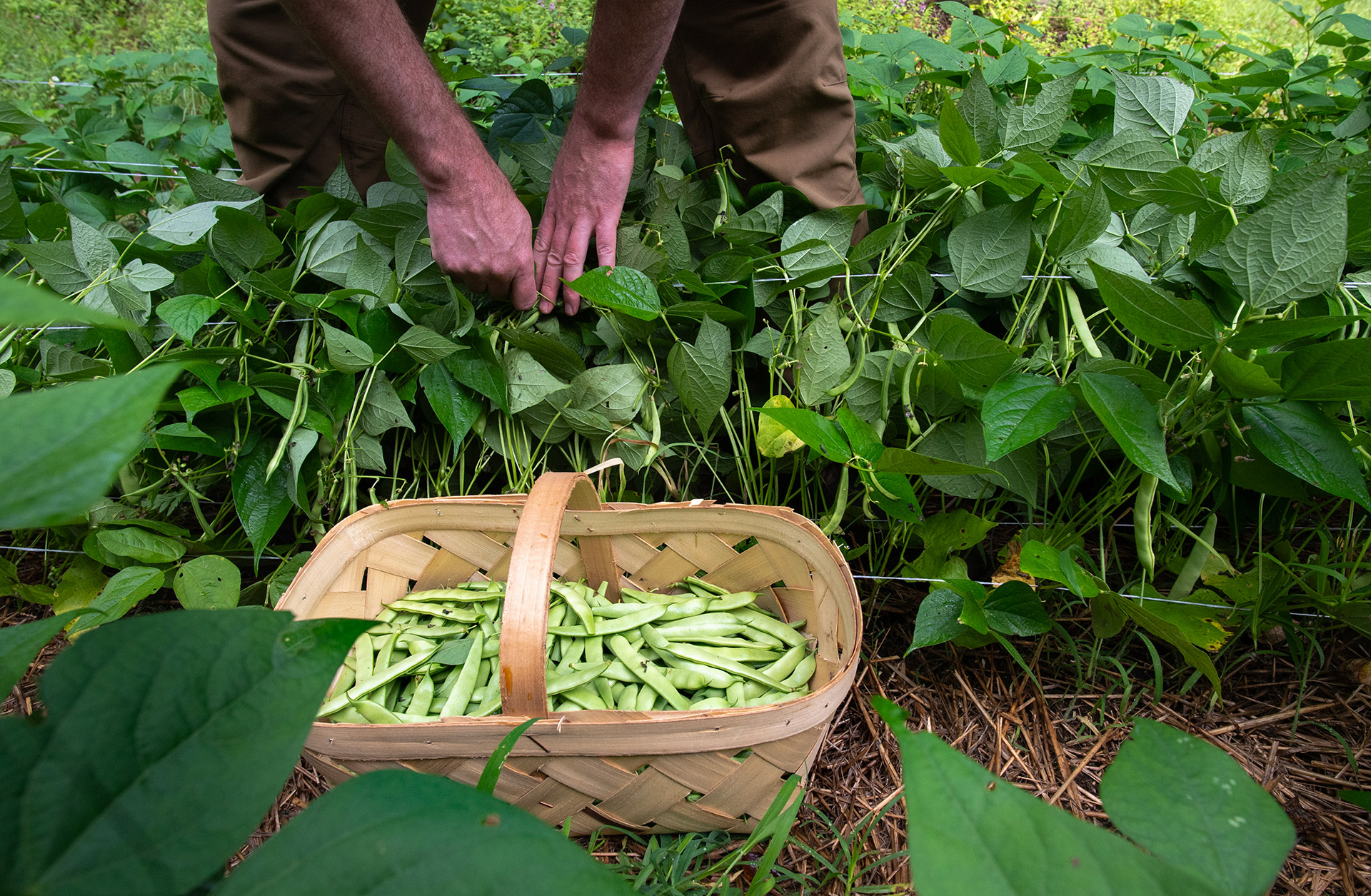
CR: Two characters in the book ask a version of this question: Why did it take a murder to have this conversation or try to bridge this gap? Did it take you writing this book to do it yourself?
DJ: That goes back to what I just said in that these are the only moments that White people talk about these issues. And, no, it wasn’t a matter of self-discovery. It was very much a matter of the book actively addressing and condemning that fact. You know Penelope Lively said that, “A novel should reflect its society and its circumstances,” and I agree with that. The hard part for me was writing a novel that did that but knowing that as a White male writer I’m walking a razor blade between doing what must be done and economizing Black death as spectacle. There is a very real and dangerous history there that I was aware of the entire time I wrote the novel, and that was pointed out again by an authenticity reader. Much of the reason the novel is constructed the way it is is because I was wrestling with this idea. In the end, I just kept going back to the sad fact that these are the only moments where that space opens up for White Americans. These are the only moments these conversations happen. So in a lot of ways the novel is an indictment of that.
CR: Let’s talk about the Toya character. Her art and her activism seem specifically designed to make people look in the mirror, to face their pasts. Her art is transcendent—and it clearly did exactly that in your narrative. Do you hope that your art, specifically this book, will similarly make people come to terms with their privilege?
DJ: I’ve always thought the role of art was twofold: that it should elicit some emotional response in its audience (and I don’t care what that is—anger, laughter, joy, mourning, whatever—just so long as they feel something) and that it should hopefully illuminate some aspect of the human condition. The other element, though, is that art is one of the very few things that creates a safe place to confront difficult ideas. Like it’s incredibly difficult to sit down at a table and have these conversations with others. It’s hard to be confronted with ideas that challenge us and that require deep thought and time. The instinct is to get defensive, to get angry in those moments. But literature allows you to sit with those things on your own terms. There’s no one else in the room. In those moments it’s perfectly fine to be made angry or uncomfortable, but I hope that you ask yourself why. Sit with those questions. Spend days with them, weeks if you need it. That’s the space that art provides.
“Try telling someone who grew up knowing poverty...intimately that his was a life of privilege. What must be unpacked is that ‘White privilege’ is not a statement suggesting that a life was easy, but a statement suggesting that it was not made more difficult by race.”
CR: My wife, Stacy, said to me back when we were launching Salvation South, “So many of us were taught racism by the people who loved us and we loved in return.” This book explores at a deep level what White people who were taught that way cling to, what they just can’t seem to let go of. And one of the central plot points turns on that notion, through the actions of one of the main characters, Sheriff Coggins. What drove you to explore that notion so deeply?
DJ: This is a very large question that will be difficult to discuss with any sort of brevity, and so I’d rather try to unpack a small part of it. First and foremost, I think Stacy is right. And if the end goal is to be able to have difficult conversations with the ones we love, we have to find a way to navigate the roadblocks.
One of these is the admission that the histories many people were taught both at home and in schools are misleading at best and lies at worst. Nevertheless, this is what was taught and believed, and the reactionary response that comes to having this history questioned is the educational equivalent of suddenly being told that two plus two no longer equals four. But the greatest roadblock seems to be the conflation of race with class, and this isn’t new. W.E.B. Du Bois noted during Reconstruction that the White working class’s unwillingness to align with Black labor, “drove such a wedge between White and Black workers that there probably are not today in the world two groups of workers with practically identical interests who hate and fear each other so deeply and persistently and who are kept so far apart that neither sees anything of common interest.” Over a century later, that phrase “today in the world,” largely holds. You say the words, “White privilege,” and it is immediately met with defensiveness and anger. One of my father’s earliest memories is growing up in a place he remembers as “the rat house,” where, as a four- or five-year-old child, he was scared to go to sleep for fear that rats would gnaw his feet off in the night. Try telling someone who grew up knowing poverty that intimately that his was a life of privilege. What must be unpacked is that White privilege is not a statement suggesting that a life was easy, but a statement suggesting that it was not made more difficult by race. My father grew up very hard, but he’s still less likely to be pulled over by police. He’s still less likely to have his vehicle searched once stopped. He most assuredly earned more than his Black coworkers. We are currently operating at a larger wage gap between Black and White workers than we were in the years before I was born. The inequity is easy enough to point out, but what must be understood is that having privilege in those circumstances does not necessarily demand that one’s own life was easy. The Venn diagram of race and class has a great deal of overlap, but make no mistake, the circles run vertical. One lies on top of the other.
In the end, I say all of this to say that that’s the ground that has to be trod to reach any sort of meaningful conversation, and it’s difficult. Its mine-riddled ground and we are an air-conditioned culture. We have no tolerance for being made uncomfortable, and that very fact is at odds with the types of conversations we need to have. We have to reach a place where we allow ourselves to be vulnerable and allow ourselves to be made uncomfortable, and not just for the duration of the conversation but for an extended period of time. The sad truth is that there are few things in this country more dangerous than a White man made uncomfortable. And in a lot of ways, Sheriff Coggins is a reflection of that.
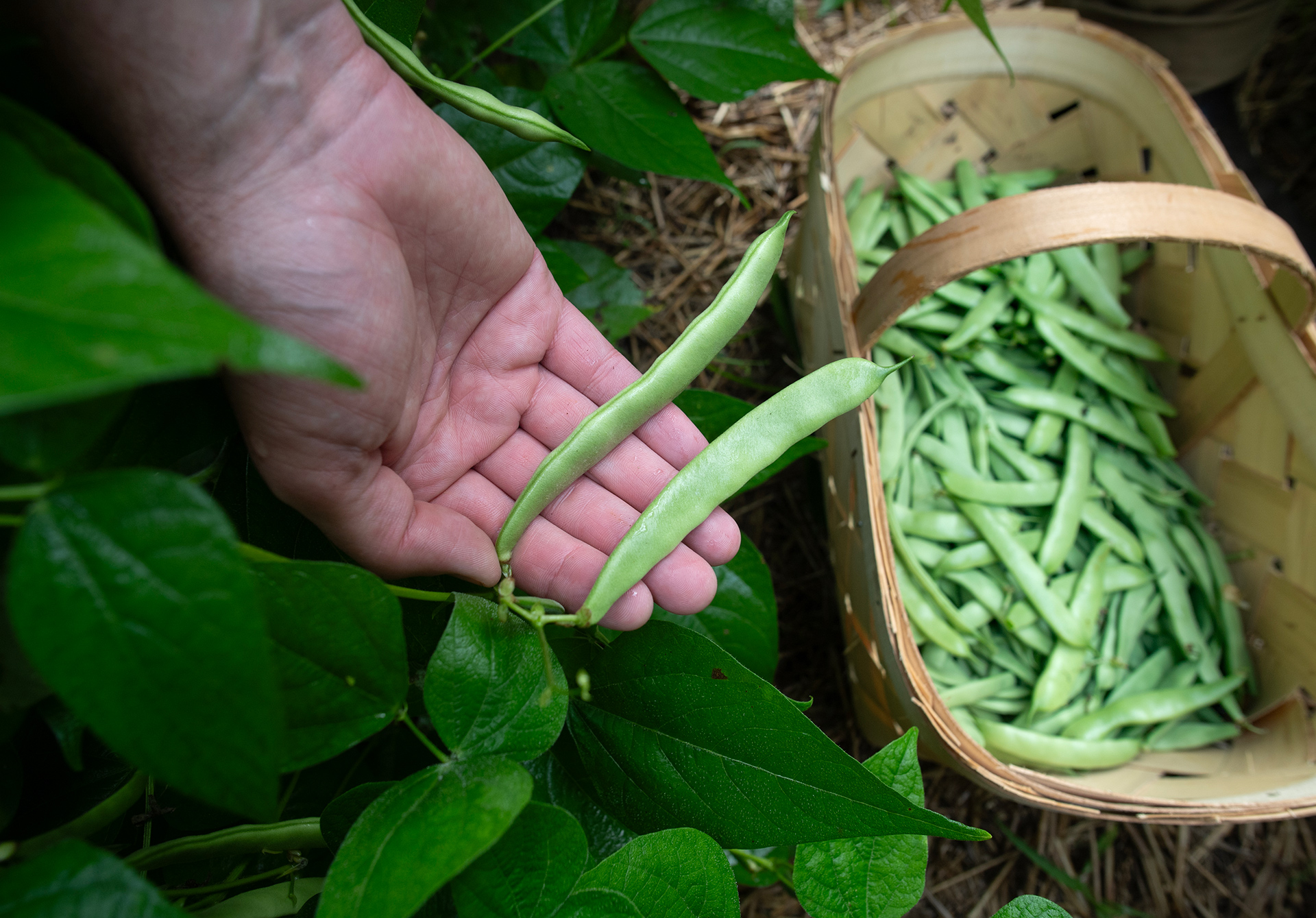
CR: I heard somewhere that you said writing this book “emptied” you and that you worried about getting it right. What are/were your concerns about this book? Why did you say it emptied you?
DJ: Again, it goes back to the simple fact that when you’re writing across race, place, or gender, and particularly when those leaps involve power, histories of exploitation, and misrepresentation, you best do the work to get it right. I personally believe all art is a matter of appropriation. But appropriation from a place of historical power and impunity means much higher stakes and much more potential to not only get things wrong but get things wrong in a manner that causes further damage. With this novel I’m dealing with issues of White normativity, Black death as spectacle, Black naiveté and racial socialization, White ignorance and White innocence, and a host of other big issues with deep historical implications. Some of these things were issues I was very conscious of from the beginning, and some of these issues were things brought to light by a very thorough and thoughtful authenticity reader. But every piece had to be deeply considered. There was just so much to get wrong. In the end, you do the best work you can and know that there are going to be mistakes, and that when those errors are brought to light you take those criticisms as opportunity.
CR: The final chapter of Those We Thought We Know is honestly one of the most powerful, lyrical and moving pieces of writing that I’ve ever read. Without spoiling anything for folks who haven’t read it yet, can you talk about what you were hoping to achieve in this chapter.
DJ: The hope is always to slip gracefully off the stage. That’s the hardest part. That’s the magic trick. And I don’t know whether I pulled it off or I didn’t, but I know that the book couldn’t have ended before this. There needed to be space. There needed to be a return. I tried to mirror that final chapter off of the song that Vess and Toya dance to in the garden earlier in the novel. In that final chapter it says, “There is something in the air around her that feels like the turn of a song.” That’s an allusion to intent. It’s a return to the moment earlier in the novel where, “what she’d always loved…was the promise of what would come, the hope in the way that it ended.”
“One of the big questions that arose over the course of writing this novel was, can you write a book about race that is primarily, if not solely, intended for a White audience? In the end...my answer was not only yes, but that it is necessary.”
CR: I remember the first time I met you at a book launch event in Atlanta when your second novel, The Weight of This World, came out. The very first sentence of that book had just knocked the stuffing out of me. I’ve literally, to this day, never forgotten that line: “Aiden McCall was twelve years old the one time he heard ‘I love you.’” And I remember asking you about that line. If I remember right, I told you how that line blew me away and I asked you, “When did you finally know that should be the opening line?” And your answer was, “Well, it was the first line I wrote.” I was really taken with how many sentences that powerful are in Those We Thought We Knew. One of my favorites is this: “Vess walked to the center of the backyard and stared straight above at what little was left of heaven.” That idea—what little is left of heaven—there’s 600 tons of power in those six words. So, I’ll try this one more time: How hard was it to come up with that line? Or did it just leap out of your fingers?
DJ: I listened to this Cherokee mask maker, Billy Welch, describe his process recently and he was saying that you don’t know what a piece of wood holds until you open up the log. He said you just start whittling away and there comes a moment when, “the grain reveals itself to you.” The piece of wood tells you what it is. When he said that, I just kept thinking about how true that is for writing as well. You reach these moments when the grain reveals itself to you. It’s not hard at all in that sense. And at the same time, it’s absolutely impossible unless you do the very real work of opening up the log and whittling back until it can be made visible.
CR: You’ve told me before that your books aren’t for everybody. Do you think this one is?
DJ: One of the big questions that arose over the course of writing this novel was, can you write a book about race that is primarily, if not solely, intended for a White audience? In the end, I just kept going back to what Toni Morrison told Charlie Rose, and my answer was not only, yes, but that it is necessary. The truth is that this novel is not intended for a Black audience. And that’s not to say that should a Black reader engage with the text that I do not hope the story and characters ring true. But that is to say that the ideas, issues, and questions raised have been discussed, understood, and lived ad nauseam by this community. And it is also to say that some of the events in this story could even be traumatic for Black readers. At the same time, there are going to be plenty of White readers who are unwilling or unable to wrestle with the ideas. There will be people who reach certain conversations in that novel and get so angry or feel so uncomfortable that they’ll put the book down. The hope is obviously that you sit with those feelings and try to understand why the text elicited that reaction. But we both know plenty of people just won’t pick the book up again. They won’t wrestle with the ideas or the emotion because it’s too much work. It’s easier to just set it aside.
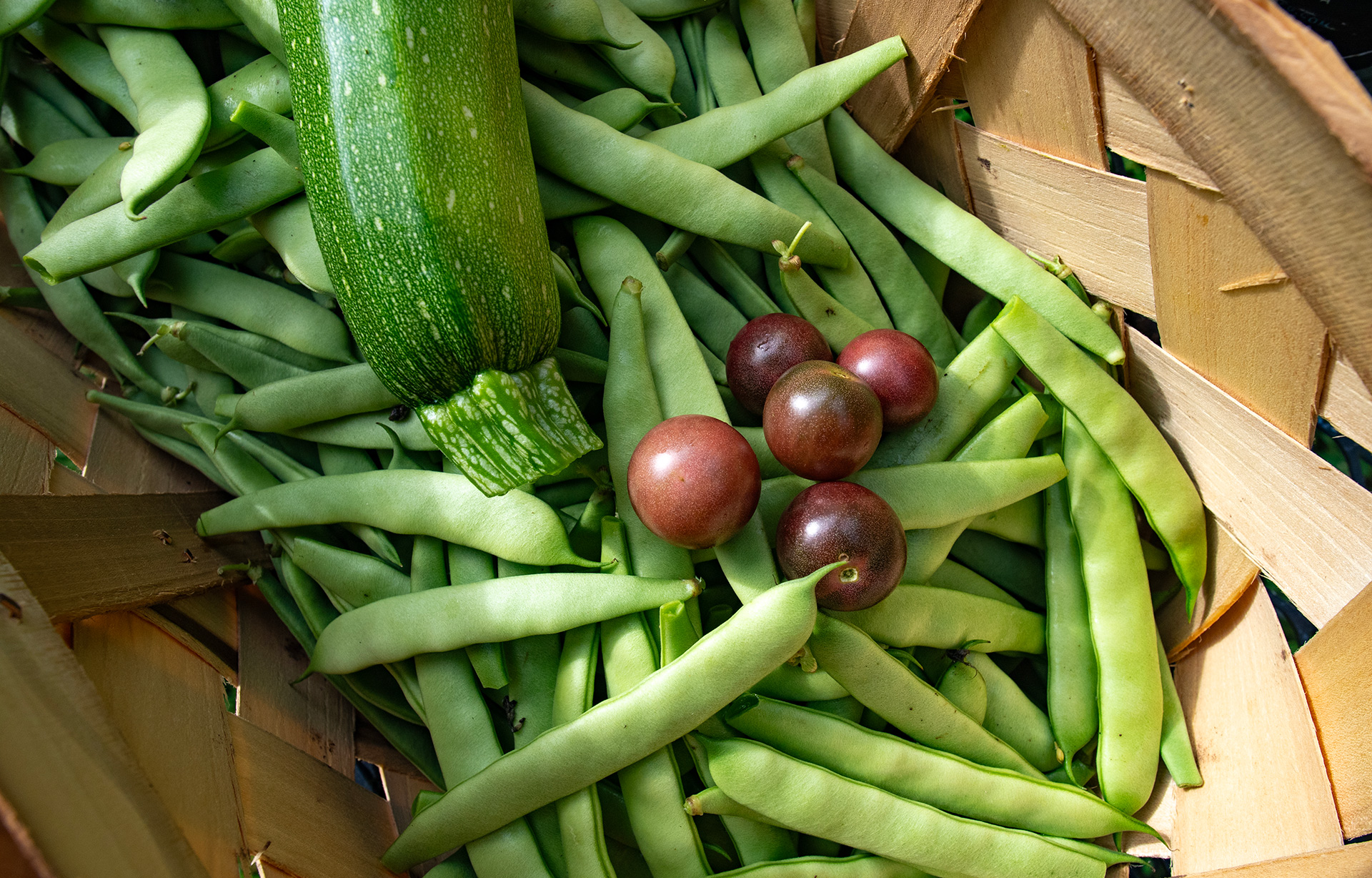
CR: This book deals with a real event in Western Carolina University's history, the removal of the Mount Zion AME Church and the reinterment of the African American dead who had been buried in its cemetery. It’s just one more example of how Black history and culture get literally erased. What do you want your readers to understand about that erasure?
DJ: I don’t think that anything meaningful can happen until we start to lay the ugly out on the table. What good is a land acknowledgement without openly admitting that you bulldozed a Cherokee mound? What good is renaming a building that was named after an enslaver if you don’t reckon with the fact that two other cemeteries on that campus went untouched while you asked a Black congregation to dig up their dead? And this isn’t an indictment strictly of Western Carolina University. This is an indictment of all of us, of White America in general. The responses of well-intentioned White people are seldom more than performative gesture. And I say that while also admitting that I don’t believe those actions are necessarily disingenuous. I think in a lot of ways we don’t know what real action looks like. But what I do know is that we accomplish nothing by failing to acknowledge the ugly.
I say proudly that I’m a twelfth generation North Carolinian, but you can’t make a statement like that without also acknowledging all of the horrible that something like that entails. I’m the descendant of enslavers. I am the descendant of people who fought in order to keep others enslaved. I don’t carry guilt for this. I don’t feel ashamed about this. But I do feel a very real sense of responsibility to acknowledge that this is who I am and how I got here, to acknowledge that so much of that history is still deeply ingrained in everything around me and that like it or not I remain a direct beneficiary.
I read an essay recently that was attempting to explain how someone like Marjorie Taylor Green comes to be, but in the essay, it says, “[Hers is a] worldview shaped in a community artificially devoid of sociocultural conflict, a history scrubbed of tension.” The essayist goes on to write that Green came from a place where, “If you don’t talk about it, it goes away.” The truth, though, is that’s not just Marjorie Taylor Green’s reality. That’s White American reality. We’ve got a horrible tendency of pretending everything is fine. But treatment only comes after the admission of a cancer.
“This country was founded upon and perpetuated by White supremacy. It infiltrates and governs every system of power at play. It’s as American as two dipshit billionaires wanting to play fisticuffs in the Colosseum. This is who we are.”
CR: You live in a small community in the middle of a bunch of other small communities that are threatened all the time by runaway real estate development. There are many events and institutions that work constantly to preserve, celebrate, and share Appalachian music, culture, and craft, yet it feels like the old ways are slowly but surely disappearing in spite of such attempts. Fewer people are passing along the skills necessary to be self-sufficient such as gardening, canning, sewing, hunting, fishing, etc. What are your thoughts about this? I know you are from a rural community near Charlotte that no longer exists. What is/was the name of that community?
DJ: I grew up in Moore’s Chapel. My father grew up in Paw Creek. I think he made it about five miles down the road in total. But all of my paternal family is from right there. Paw Creek, Moore’s Chapel, Berryhill, Steele Creek. And those are names that still exist on signs, but that’s it. As for the places I come from, it’s that Gertrude Stein idea that, “There is no there there.” It’s a hard thing to describe, primarily because it’s something that disappeared so rapidly. I grew up to a rural people who were swallowed by a city. I grew up a mile or so down the road from an uncle who kept rabbit dogs. I grew up running through a cattle pasture every day to fish a small farm pond for bream and bass and crappie and catfish. I grew up riding around with a grandmother who pointed to fields where she’d worked cotton and tobacco as a child, who pointed to all of the houses her father and brothers had built.
As for the cultural extinction that accompanies the disappearance and erasure of place, that’s what keeps me up at night. It’s like I wrote at the end of When These Mountains Burn, “Now everyone was sitting around watching the last of it flicker like a sunset with eyes blind and minds dumb to the fact that when the night finally came there would come no light again. The very nature of things demanded that there would come a moment in history when hopefulness would equate to naivety, when the situation would have become too dire for saving. Raymond knew this, and it was that final thought that had left his heart in ruins.”
CR: What would you say to any people in Jackson County who take offense to the fact that the events of this book take place there or to people who say that it’s not an accurate depiction of their town, law enforcement, people in power, etc.?
DJ: It honestly doesn’t matter where I set the story. When you’re dealing with issues of racism and White supremacy, there would be an inevitable passing-of-the-buck, a that’s-not-here-that’s-there defensiveness and scapegoating by White readers whether I set the story here or Carmel-by-the-Sea. Rural folks think it’s an urban problem. Urban folks think it’s a rural problem. The West Coast points to the East Coast. The whole goddamn country believes down to their very bones that racism is some solely Southern phenomenon. There’s a moment in this novel when one of the characters, Willy Dean Cawthorn, who is arguably the most overt racist in the book, says to a deputy, “There’s people all over this country feel like I do.” In the copy edits, I was asked if I meant “county.” No, I don’t mean county. I mean country. This country was founded upon and perpetuated by White supremacy. It infiltrates and governs every system of power at play. It’s as American as two dipshit billionaires wanting to play fisticuffs in the Colosseum. This is who we are. I set things here in Jackson County because this is the only place I know. I’ve been here the majority of my life. But I operate from that Eudora Welty idea that, “One place understood helps us understand all places better,” that James Joyce idea that, “If I can get to the heart of Dublin I can get to the heart of all cities of the world.” This isn’t a novel about Jackson County or North Carolina or even the South at large. At its heart, it’s simply American.
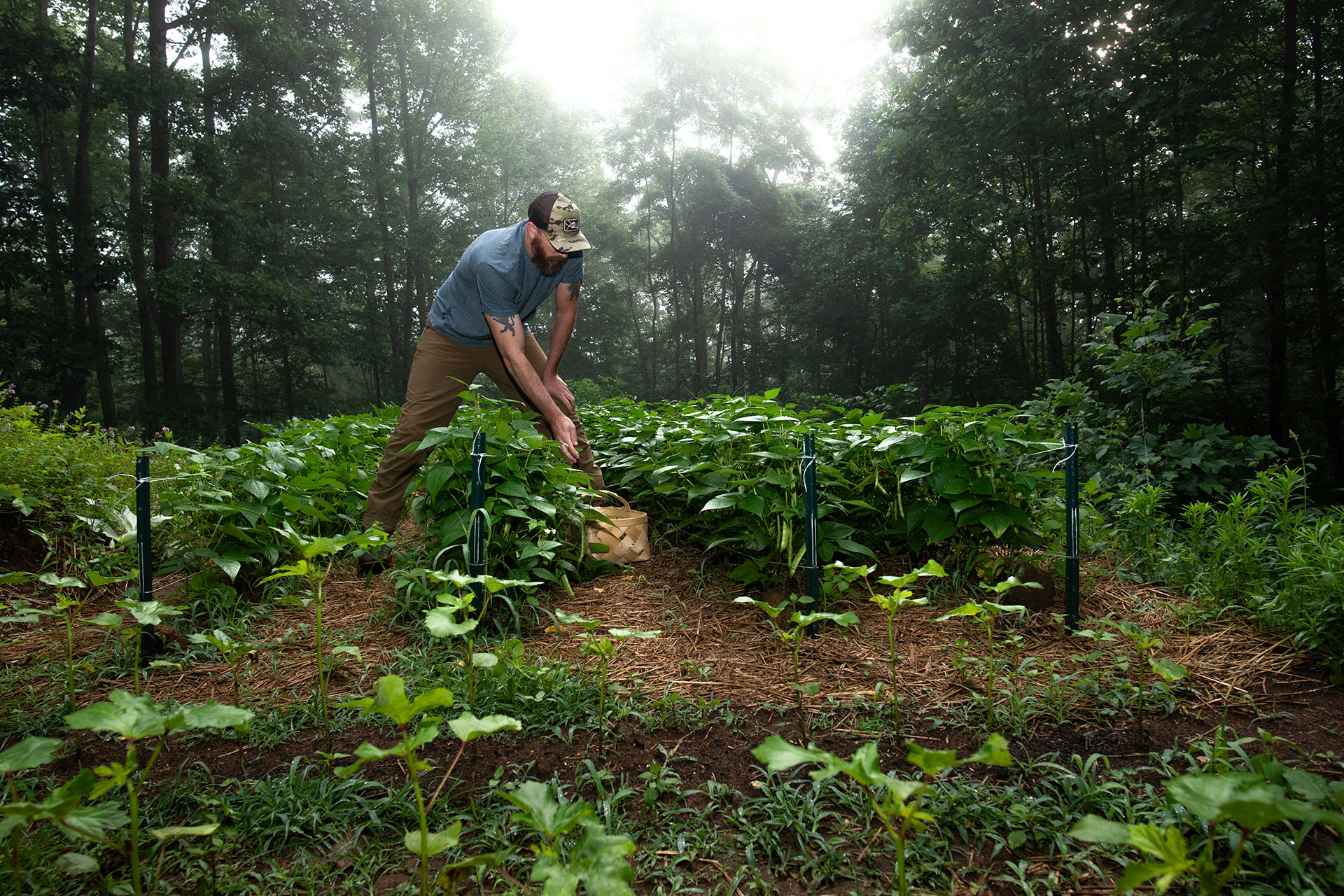
CR: In my view your first three novels were straight-up thrillers, but that the last two are built around big issues—the opioid crisis and racism, respectively. Feels to me like there’s been an intentional move in that direction. Am I right? And if so, why have you moved that way?
DJ: I think the hope is always that the work expands. These last two were social novels in ways that maybe those first three weren’t. But I don’t believe that shift was intentional. Storytelling for me is very much a compulsion, an I’m-going-to-die-if-I-don’t-get-this-out-of-me sort of feeling. I tell the story I’m consumed by at the time. The novel I’m working on now feels in a lot of ways like a return to some of the things I did early on. I don’t know. I just know that a character started talking and I was thankful.
CR: Who are your literary influences? Who are the writers currently writing that you most admire? And why? Who do you think are some of the best musicians/lyricists/poets currently?
DJ: Influence might not be the right word in that these folks are doing things that I can’t do and wouldn’t attempt, but I’ve said for a long time that the most interesting thing being done in American literature over the last ten to fifteen years has been Black novelists and story writers subverting real world issues through a sort of fantastical lens. On a simple level think Colson Whitehead’s The Underground Railroad making it a literal railroad. Perhaps slightly more fantastic, think Maurice Ruffin’s We Cast a Shadow set in a future America where a Black father is wrestling with whether or not to get an experimental medical procedure to Whiten his biracial son. It reminds me in a lot of ways of the magical realism that was coming out of South America in the ’70s, ’80s, and ’90s. I think the reasoning is slightly different. For writers like Saramago or Marquez or Allende there was very real political danger if they wrote things as they were.
“I think, through all of my work, religion is ever present. There’s a looming, even when it’s not out in the open. It’s that Flannery O’Connor idea that while ‘the South is hardly Christ-centered, it is most certainly Christ-haunted.’”
And that’s not to say that’s something that isn’t at play here because it is, but I think maybe the intent is to subvert reality in a way that makes it digestible and approachable. If White audiences keep pushing the issues into the ditch, maybe these novels create a space to approach the conversations and ideas in a way that doesn’t feel as threatening. Rion Amilcar Scott is another great example with a book like The World Doesn’t Require You. This year Nana Kwame Adjei-Brenyah’s Chain Gang All Stars, which is flat brilliant. As for poets: Jericho Brown, Ray McManus, Crystal Wilkinson, Noah Davis, Ashley Jones, I could go on and on but it’s probably best that I don’t. I will add that the best book of poetry I’ve read this year is Denton Loving’s Tamp.
CR: You dedicated Those We Thought We Knew to a woman I’m lucky enough to be friends with, too: Marie Cochran. the founder of the Affrilachian Artist Project, whose spirit, you write, “burns as fiercely bright as anyone’s ever born of this place.” I’m really curious about why you dedicated the book to her. What did she give you that made her so important to this creation?
DJ: When I think about the most meaningful and difficult conversations I’ve had with regard to race those conversations all took place with Marie. Whether that be sharing work back and forth or breaking bread or sitting with someone like Civil Rights activist Selma Sparks, she’s always made a place for me at the table. I’ve been very fortunate to consider her a friend for more than a decade. What always amazes me is her thoughtfulness, her carefulness with what she says and how she says it. We don’t always agree, but she sits with ideas. The work she’s done and continues to do is important and seldom if ever self-serving. You can’t spend a day with her and not feel compelled to get off your ass and do something. She’s just a woman of righteous heart, and I love her dearly. But with all that said, I don’t know that she’ll like this book and that’s okay. She’ll most certainly tell me if she doesn’t, and I’ll most certainly listen.
CR: The only time I ever had the privilege to edit your writing was when you contributed an essay called “Digging in the Trash.” It was a very honest reflection of your experience growing up in the rural South and the misconceptions, assumptions, and stereotypes about people from this region. That was quite a few years ago, and I’m curious: Is there anything you would change or add to this essay today?
DJ: No, I don’t think I’d change a word. I haven’t read or thought about that essay in a long time, but I’m pretty confident I’d leave it alone. That piece came out of a place of anger and that’s where some work needs to come from. I could write it again today, but it wouldn’t be the same.
CR: God is a big deal in Those We Thought We Knew. And I think it’s one of the things that make the book so beautiful. The need to extend grace to others feels bound up in almost everything that happens in this book. Why is that? Is it a function of the fact that Vess, one of the main characters, is a woman of deep faith, or is there something broader going on, too?
DJ: I honestly don’t know. I can say that it’s not intentional. But I think through all of my work, religion is ever present. There’s a looming, even when it’s not out in the open. It’s that Flannery O’Connor idea that while “the South is hardly Christ-centered, it is most certainly Christ-haunted.” For someone like Vess, it is central to character. But I think you’re right in this sense of, “feel[ing] bound up in almost everything.”
CR: And finally, what’s next for you? Is novel No. 6 already in the works?
DJ: I’m a writer who’s only ever been able to see so far as the headlights. When I’m in the middle of a story, I can’t imagine anything else, can’t imagine ever doing it again, ever writing another book. But I’ve been fortunate that each time I’ve rounded that final curve and the headlights hit the end I’ve tended to have another story begin to take hold. Not long after I finished Those We Thought We Knew I woke up in the middle of the night and started scrambling for paper and a pen. A woman was talking in my dream. She’d told me the opening line. She’d told me the story. She’d told me how it ended. I haven’t had something like that, like a character actually speaking, since Jacob in Where All Light Tends to Go. With him it was the very same thing. I woke up and he was talking. It’s a very odd feeling in so much that it doesn’t feel like something you’ve created. It feels more like a gift, like something was just given to you. But that’s the story that’s got me right now.

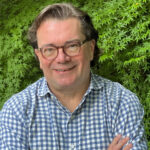
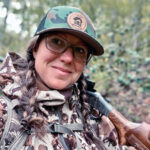
Chuck, I am so happy to find you again! I have missed you at the Bitter Southerner and although still a subscriber to that entity, I happily signed on the Salvation South as well. It’s like reconnecting to an old friend!
Thank you for this David Joy interview. He is a favorite–in my opinion, in the league of the late Larry Brown and Tim McLaurin….and like Tim, he speaks with a North Carolina voice. It is so welcomed.
Thank you!
Dale Cousins
We’re so glad to have you here, Dale. It’s always good to see old friends come around to the better publication ;). We’ve love to have you among our supporting members, if you can. Click here to check out the options.